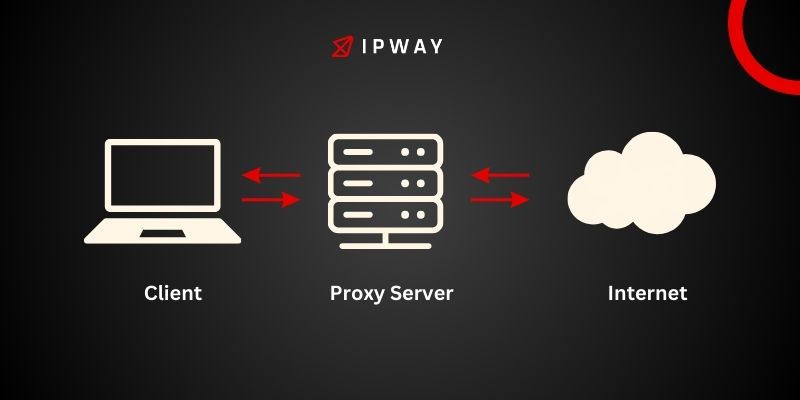In todays world of interconnected spaces it’s crucial to browse the internet securely and effectively. Meet cURL, a tool used via the command line that is well known for its ability to transfer data across different protocols. While cURL is already great on its own it truly shines when paired with proxies offering a layer of privacy, security and adaptability. This detailed guide takes us on a journey, into the realm of cURL proxies revealing the methods and tactics to make the most of their capabilities.
Whether you’re a developer looking to strengthen your network connections or a newcomer eager to dive into web communication intricacies come along as we explore the world of cURL proxies together. This will equip you with the skills needed to navigate through spaces confidently and skillfully.
- What is cURL Proxy?
- Why use cURL Proxy?
- Installation of cURL Proxy
- What you need to connect to use a proxy in cURL
- Using cURL with HTTP/HTTPS proxy
- Command line argument to set proxy in cURL
- Using environment variables
- Configure cURL to always use proxy
- Quickly Turning Proxies ON and OFF
- Avoiding SSL Certificate Errors
- Getting More Information About the Request
- Which proxies are the best for cURL
- Conclusion
What is cURL Proxy?
cURL, short for “Client URL ” is a tool used from the command line to transfer data through protocols. It can handle a variety of protocols such as HTTP, HTTPS, SOCK5, FTP and more. This tool is highly versatile and widely used by developers to communicate with servers. Many developers rely on cURL as a component in their toolkit.
Its compatibility with scripting languages like Python and PHP makes it even more useful allowing developers to automate tasks with ease. Backed by documentation and an active community cURL remains a trusted option for developers looking to streamline communication, with servers in todays dynamic digital environment.

Why use cURL Proxy?
cURL is known for its versatility, strength and wide acceptance. It allows for the transfer and manipulation of data using protocols and has the ability to work with proxies offering an extra layer of security and anonymity. Additionally cURL is praised for its compatibility across different platforms making it a valuable tool for both developers and system administrators. Its capabilities go beyond data transfer. cURL also enables easy integration with APIs to automate tasks effectively.
The command line interface of cURL provides users with flexibility and efficiency to carry out operations effortlessly. Moreover its support for proxies enhances privacy and security by safeguarding information during transmissions. In summary the adaptability and dependability of cURL make it an essential tool, for any professional looking to efficiently manage data and ensure secure communication.
Installation of cURL Proxy
macOS
Most macOS systems have cURL installed. To check if its there, open Terminal and type in
curl --versionWindows
You can get cURL for Windows from the site. Once you’ve downloaded it just include the path to the cURL exe, in your systems PATH environment variable. For instance if you saved cURL in C;\curl insert C;\curl into your PATH.
C:\curlLinux
On Linux, you can install cURL using the package manager of your distribution. For example, on Ubuntu, you can use sudo apt install curl.
What you need to connect to use a proxy in cURL
To use cURL proxy, you need the proxy server’s IP address or hostname and the port number. If the proxy requires authentication, you’ll also need a username and password. For example, if your proxy server’s IP address is 192.168.1.1, the port number is 8080, and it requires the username user and password pass, you would need all of this information to connect to the proxy.
Using cURL with HTTP/HTTPS proxy
You can use cURL with an HTTP or HTTPS proxy by using the -x or --proxy command line argument followed by the proxy details. For example:
curl -x
http://proxyserver:port http://example.com.If your proxy requires authentication, you can include the username and password in the proxy details like so:
curl -x
http://user:pass@proxyserver:port http://example.comCommand line argument to set proxy in cURL
The -x or --proxy command line argument allows you to specify the proxy server. The argument should be followed by the protocol, proxy server address, and port number. For example :
curl -x
http://192.168.1.1:8080 http://example.comUsing environment variables
You can also set the cURL proxy by using environment variables. For HTTP, you can set the http_proxy environment variable with the proxy details. For example, in a bash shell, you can use :
export http_proxy=http://proxyserver:portConfigure cURL to always use proxy
To configure cURL proxy, you can set the http_proxy environment variable in your shell profile file. For example, in a bash shell, you can add :
export http_proxy=http://proxyserver:port to your ~/.bashrc file.Quickly Turning Proxies ON and OFF
You can quickly turn proxies on and off by setting and unsetting the http_proxy environment variable. For example, to turn the proxy off, you can use unset http_proxy.
Avoiding SSL Certificate Errors
To avoid SSL certificate errors when using an HTTPS proxy, you can use the -k or --insecure option to tell cURL to not validate the peer certificate. For example:
curl -k -x http://proxyserver:port https://example.com.Getting More Information About the Request
The -v or –verbose option can be used to get more information about the request and response. For example:
curl -v -x http://proxyserver:port http://example.comWhich proxies are the best for cURL
The choice of proxy depends on your specific needs. HTTP proxies are widely used, but SOCKS proxies also offer a high level of versatility.
Conclusion
cURL is a tool for communicating with servers and APIs. Its ability to work with proxies offers developers options and enhances security. Learning how to utilize cURL proxy, allows you to make the most of its features. Whether you want to increase privacy by browsing overcome geographic restrictions or improve network efficiency using cURL with proxies unlocks a range of opportunities.
Ready to take your web scraping and security to the next level? Explore IPWAY’s innovative proxy solutions today and revolutionize your online experience!
